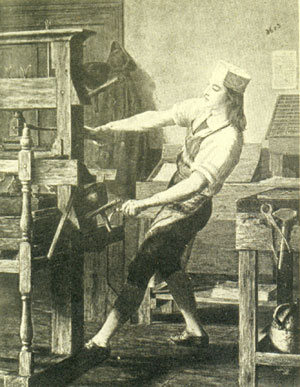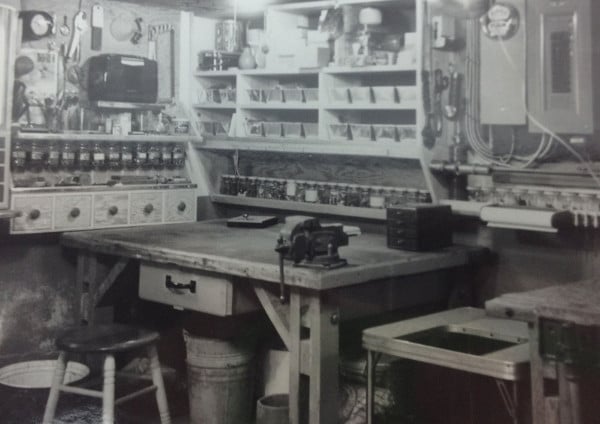
If you’ve driven on America’s highways, you’ve likely encountered a long line of military vehicles.
That, my friends, is a convoy.
In the military, convoys are used to move personnel and equipment long distances. Doing so in a group provides support to each individual vehicle.
While a convoy looks like just a bunch of vehicles following each other, there’s actually a lot of planning and preparation that goes into it to ensure everyone arrives safely, on time, and together.
Civilians often engage in convoys themselves. If you’ve ever gone on a big camping trip in a remote area that required multiple vehicles to follow each other to get there, you’ve taken part in a convoy. I did many of these convoys back in my Boy Scouting days when our troop would drive from our homes in Oklahoma to camp in Colorado. My 13-year-old brain caught on to the fact that the adults talked about our vehicular caravan as a “convoy” and had designated a “convoy leader,” but I didn’t really pay much attention to how the whole thing went down.
It wasn’t until I became an adult youth leader and started taking boys on camping trips myself that I realized it might be helpful to learn some tips on how to effectively plan, organize, and execute a convoy. So, I talked to Harrison Anderson, a former Green Beret who did 12 years of active duty service in the Army, about how it’s done.
Here’s what I learned.
Pre-Departure Briefing: The Foundation of Success
Before wheels hit the pavement, a thorough convoy brief is essential. Convoy leaders, truck commanders (see below), and drivers should attend this pre-departure briefing. Here’s what it should cover:
Establish the Chain of Command
Harrison recommends having the following chain of command for your convoy:
- Convoy leader. The convoy leader should be in the first vehicle. His job is to oversee the planning and execution of the convoy, ensure the safety of everyone in it, and make navigation decisions like route adjustments.
- Second-in-command (2IC). A convoy should have a second-in-command who should sit in the last vehicle in the convoy. His job is to support the convoy leader in his responsibilities. By being positioned at the end of the convoy, the 2IC can monitor its length and respond to any issues, such as a vehicle in the line getting a flat tire. Harrison also told me the 2IC monitors the weather and informs the convoy leader of any inclement conditions that could affect the convoy’s safety.
- Truck commander (TC). Each vehicle in the convoy should have a truck commander who sits shotgun to the driver. The TC’s job is to monitor the communications line with the convoy leader to stay abreast of updates and keep things coordinated. Drivers, of course, shouldn’t handle communications for safety reasons!
Vehicle Checks
Convoy leaders should check with drivers to ensure that vehicles are completely fueled and tire pressure is at a safe level. Harrison also likes to check with drivers to make sure their vehicles have a filled spare tire and a working jack in case they get a flat. Also, check that the drivers have adequate supplies to manage an emergency situation, like being stranded away from civilization for a bit. See our article on what every man should keep in his car.
Communications Check
After establishing a chain of command for the convoy, the next part of your pre-departure briefing should be a “comms check.” Communication is a key part of a successful convoy. It allows for adjustments to be made on the fly while ensuring the convoy stays together.
Again, truck commanders of each vehicle will be in charge of communications.
If you’re using radios for communications (see our guide on walkie-talkies), Harrison recommends checking the following items on your radios:
- Radios are fully powered
- Everyone has backup batteries
- Everyone is on the same channels
If you’re not using radios, establish a group text chat that everyone will use for comms. The convoy leader sends a text to all the truck commanders and has each truck commander send a text to the group to ensure everyone is sending and receiving messages.
After establishing a group chat, the convoy leader ensures that all truck commanders have the cell phone numbers of the convoy leader, the 2IC, all the other truck leaders, and emergency contacts programmed into their phones.
Route Overview and Navigation Alignment
After the comms check, the convoy leader goes over a general, big-picture overview of the route the convoy will be taking to its destination with all the drivers and truck commanders.
After verbally sharing the route, the convoy leader ensures that all truck commanders will be using the same navigation app on their smartphones. “Some people are using Google Maps, and some people might be using Apple Maps, and these apps might use different routes to get to the same destination,” Harrison noted.
After the convoy leader has verified that everyone is using the same map app, the convoy leader will text all the truck commanders a pin to the destination and verify that all truck commanders have the same route on their app.
As a redundancy (Two is one and one is none! Always be antifragile!), the convoy leader should print out paper directions to the destination and hand them to the truck commander of each vehicle.
Review Planned Stops
After discussing the route, the convoy leader will communicate planned stops to the drivers and TCs. At planned stops, vehicles will refuel, and members of the convoy can get out, go to the bathroom, and grab something to eat.
Establish Emergency Procedures
The convoy leader should establish emergency procedures in the event of a car breakdown, accident, or other event that separates the group and communicate these procedures to the drivers and TCs.
Harrison offered this example of a procedure for addressing a flat tire:
- Have the affected vehicle and the last vehicle with the 2IC pull over to handle the flat tire.
- The rest of the convoy proceeds to the next safe stopping point while staying in communication with the affected vehicle and the 2IC.
“If you’re on a freeway, you don’t want everyone pulling over if one vehicle has a flat tire because it’s just dangerous to have that many vehicles on the shoulder of the road. You want to minimize your footprint as much as possible,” Harrison told me.
If the convoy leader thinks it’s appropriate, he can direct the rest of the convoy to continue to their final destination while the affected vehicle and 2IC stay behind to fix the flat tire or address another issue. They can catch up with the rest of the group later. If this is what the convoy leader decides to do, the truck commander of the last vehicle of the remaining convoy becomes the 2IC of the segment of the convoy that continues to advance.
On the Road
Once you’re moving, keep these guidelines in mind:
- Vehicle Positioning: Place the convoy leader in the front of the line and the second-in-command in the last vehicle.
- Spacing: Maintain 2-3 car lengths between vehicles to balance cohesion and safety. On dusty roads, you’ll want to increase your space even more.
- Lighting: Keep headlights on even during the day for better visibility and easy identification.
- Lane Discipline: Stay in the right lane to avoid unnecessary separations. No passing!
- Regular Check-ins: The convoy leader should provide regular updates on upcoming turns or potential hazards to TCs. 2IC communicates weather conditions to the convoy leader.
Post-Trip Debrief
After reaching your destination, take a moment for a quick after-action review (AAR):
- Address any issues that arose during the trip.
- Check fuel levels and vehicle status for return trip planning.
- Discuss any lessons learned for future convoy operations.
Key Takeaways From a Special Ops on Running a Successful Convoy
1. Preparation is paramount: A thorough pre-trip briefing sets the stage for success.
2. Communication is key: Establish clear channels and protocols for staying in touch.
3. Flexibility matters: Be ready to adapt your plan to changing conditions or emergencies.
4. Safety first: Always prioritize the well-being of your convoy members and other road users.
There you go. How to execute a convoy like a Green Beret. Use these tips on your next multi-car trip to ensure everyone gets to the destination safely and efficiently, and don’t forget to play the soundtrack of convoys everywhere.







